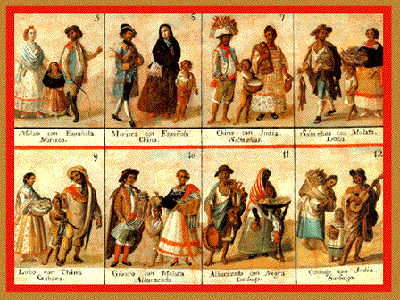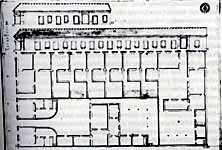
Lecture Outline:
A. Spanish Views of Racial Superiority:
1. Race as Viewed through the Caste Paintings of the 18th c.
2. Legal Minority as a Reflection of the Color-Class Hierarchy
B. Mestizaje
1. Intermarriage: The Royal Pragmatic of 1776
a. Iberian Origins:
b. Local Understandings: The Laws of Cuba and Mexico
2. Rape and Sexual Abuse in Slave Societies

Key Terms:
| Mestizo/a
Indio/a Zambo/a |
Casta
Patria Potestad Mulato/a |
Royal Pragmatic of 1776
Mestizaje |
Douglas Cope, Chapter Three and Four, "The Significance and Ambiguities
of 'Race'"
and "Plebeian Race Relations" in The Limits of Racial Domination;
pp. 49-85.
Susan M. Socolow, "Acceptable Partners: Marriage Choice in Colonial Argentina, 1778-1810," in Sexuality and Marriage in Colonial Latin America. pp. 209-259.
Translation of Charles III, "The Pragmatic Sanction of 1776"
Questions for Consideration:
1. Cope lists various "criteria" Mexico City's residents used for judging an individual's place in the color-class hierarchy of the city. What were they, and to what extent did they reflect continuities with or change from the previous "social markers" we’ve discussed?
2. Discuss Spanish hegemonic ideas of "race," paying special attention to the language used in the law issued by Charles III. What was at the basis of the attempt at keeping races from mixing? Drawing from the readings and class lectures, assess how successfully were these ideas imposed on colonial Spanish Americans.
